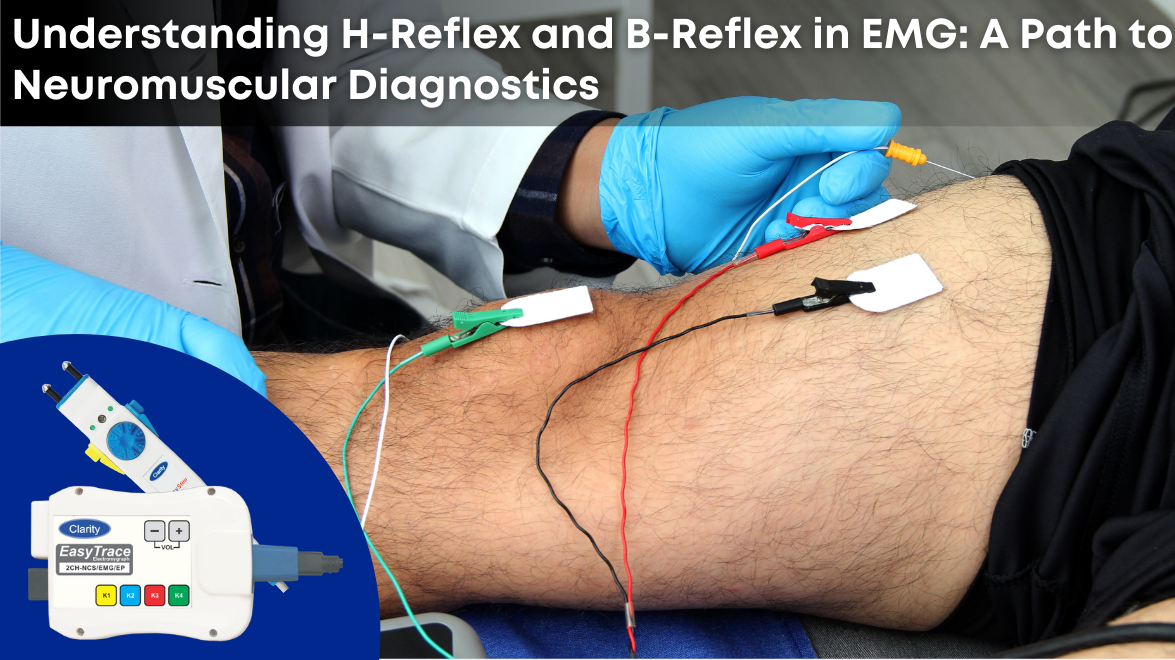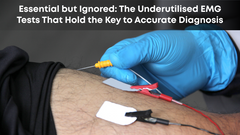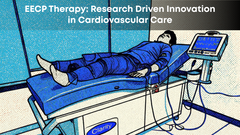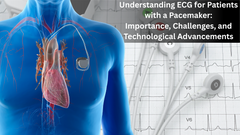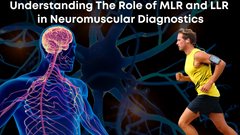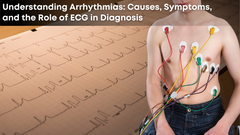Understanding H-Reflex and B-Reflex in EMG: A Path to Neuromuscular Diagnostics
The field of electromyography (EMG) has revolutionized the understanding of neuromuscular health, enabling precise diagnostics and effective interventions. Among its various applications, the study of H-reflex and B-reflex stands out for its ability to unveil critical insights into nerve and muscle functionality. These reflexes, though less known to the general public, are indispensable in clinical neurophysiology. Let’s explore the science behind these reflexes, their clinical relevance, and how Clarity Medical’s EMG devices deliver unmatched accuracy and reliability in their measurement.
Understanding H-Reflex and B-Reflex
H-Reflex: Hoffmann Reflex
The H-reflex is a cornerstone in the evaluation of spinal reflex circuits. Analogous to the monosynaptic stretch reflex, it is elicited not through physical stretch but by electrical stimulation of a mixed nerve, such as the tibial nerve.
Mechanism:
> A low-intensity electrical stimulus activates Ia afferent fibers (large-diameter sensory fibers).
> These fibers relay the signal to the spinal cord, where they synapse with alpha motor neurons.
> The motor neurons then generate a response in the target muscle, commonly the soleus, causing a measurable contraction.
Key Features:
> Provides insights into spinal cord excitability.
> Helps assess the integrity of the monosynaptic reflex arc.
> Sensitive to changes in peripheral and central nerve conditions.
B-Reflex: Beta Reflex
The B-reflex, though less commonly studied, represents a complementary pathway that may involve smaller-diameter sensory fibers or alternative neural circuits.
Mechanism and Features:
> Triggered by higher-intensity electrical stimulation compared to the H-reflex.
> Exhibits variable latency, often longer than the H-reflex.
> Highlights the complexity of spinal and peripheral reflexes.
Though less widely used, the B-reflex holds promise for advanced neurophysiological research, particularly in understanding alternative neural pathways.
Clinical and Practical Applications
H-Reflex in Clinical Practice
The H-reflex is a powerful diagnostic tool, offering unparalleled insights into neuromuscular health. Its applications include:
> Neuropathy Assessment: Detects conditions like diabetic neuropathy or peripheral nerve damage by evaluating the latency, amplitude, and presence of the reflex.
> Radiculopathy Diagnosis: Identifies spinal nerve root compression in conditions like herniated discs or spinal stenosis.
> Spasticity Evaluation: Measures heightened reflex activity in disorders like multiple sclerosis or spinal cord injuries.
> Motor Neuron Disorders: Monitors diseases such as amyotrophic lateral sclerosis (ALS) or post-polio syndrome by analyzing changes in reflex pathways.
> Sports Physiology: Assesses muscle activation and fatigue, aiding athletes and rehabilitation specialists in performance optimization.
Emerging Applications of B-Reflex
While less standardized than the H-reflex, the B-reflex offers exciting possibilities:
> Advanced Research: Understanding alternative reflex pathways.
> Complex Diagnostics: Complementing H-reflex in challenging clinical cases.
Why Precision Matters in Reflex Studies
Accurate measurement of H-reflex and B-reflex requires high-quality EMG equipment capable of delivering consistent electrical stimulation and recording precise responses. Suboptimal devices may introduce artifacts, compromise data integrity, or fail to capture subtle reflex variations critical for diagnosis.
Clarity Medical: Setting New Standards in EMG Technology
Clarity Medical has emerged as a leader in the field of neurophysiological diagnostics, offering state-of-the-art EMG devices that combine precision, reliability, and ease of use. Here’s how Clarity Medical’s devices excel in H-reflex and B-reflex studies:
1 Advanced Signal Processing
> Clarity Medical’s devices are equipped with cutting-edge noise filters to minimize interference from environmental and physiological artifacts.
> Ensures high-fidelity recording of reflex responses, even in challenging clinical settings.
2. Customizable Stimulation Protocols
> Flexible settings allow clinicians to fine-tune stimulation parameters for optimal H-reflex and B-reflex elicitation.
> Supports diverse patient profiles and research requirements.
3. User-Friendly Interface
> Intuitive software simplifies complex diagnostic workflows.
> Provides real-time visualization of reflex responses, aiding immediate interpretation.
4. Portability and Durability
> Compact and robust design ensures seamless operation in diverse environments, from clinics to research labs.
> Ideal for field studies and remote diagnostics.
5. Cost-Effective Solutions
> Offers exceptional value without compromising on quality, making advanced diagnostics accessible to a broader range of healthcare providers.
Conclusion
The H-reflex and B-reflex are invaluable tools in the evaluation of neuromuscular health, offering critical insights into spinal cord function, nerve integrity, and muscle responsiveness. Clarity Medical’s cutting-edge EMG device EasyTrace, empower clinicians and researchers to unlock the full potential of these reflex studies. With unparalleled precision, versatility, and ease of use, Clarity Medical stands as the go-to choice for healthcare providers seeking excellence in neurophysiological diagnostics.


